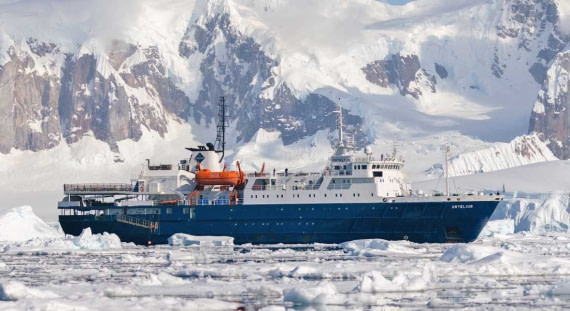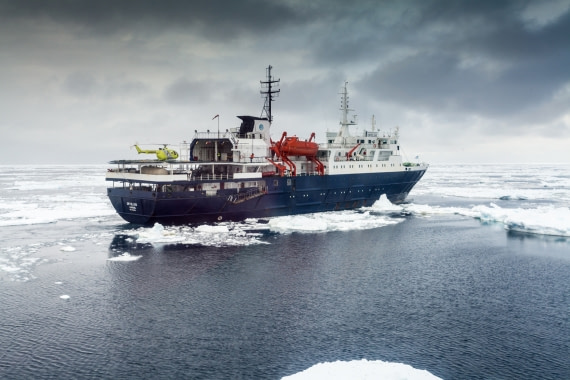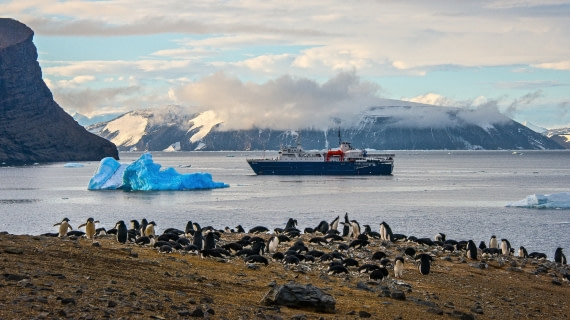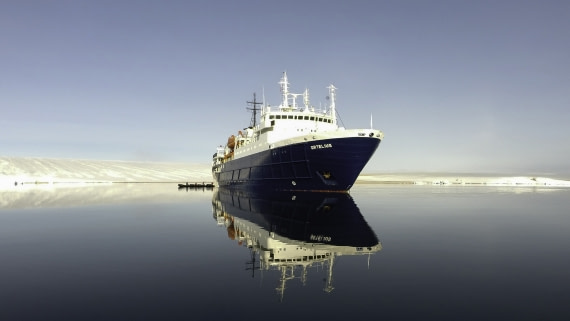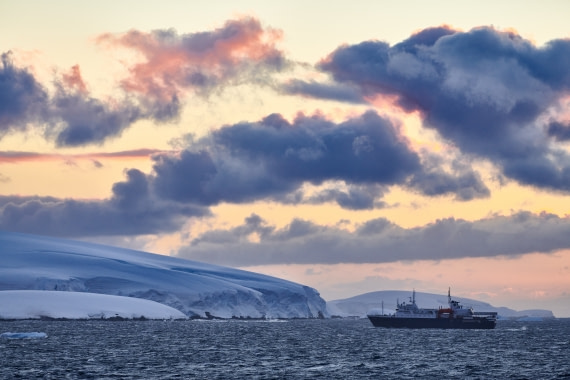| Fecha: |
29.01.2025 |
| Posición: |
62°59.3’S / 060°36.1’W |
| Viento: |
NW4 |
| Clima: |
Clear |
| Temperatura del Aire: |
+2 |
We started the day by sailing through Neptune’s Bellow, the entrance to Deception Island. The sun was shining, and fresh snow covered the active volcano, making everything look magical. The air was crisp but refreshing, and the sea was calm as we made our way forward. The landscape around us was breathtaking, with the dark volcanic rocks of Deception Island contrasting beautifully against the white snow. It was the perfect way to begin our last day in Antarctica.
Our landing was at Telefon Bay, a place known for its dramatic volcanic scenery. As soon as we stepped onto the island, we prepared for a long and steep walk around the crater. The climb was a bit challenging, but we took our time, enjoying the stunning views along the way. The sun was still shining brightly, and despite being in Antarctica, it felt surprisingly warm. We could feel the heat reflecting off the snow, making the hike quite comfortable. The silence around us was incredible—just the sound of our footsteps and the occasional gust of wind. It felt like we were walking on another planet.
After our rewarding hike, we returned to the ship, where we had a special learning session with Sara. She spoke to us about the threats facing marine mammals, such as whales and seals. It was eye-opening to learn how climate change, pollution, and human activities affect these magnificent animals. We left the session with a deeper understanding of the challenges marine life faces and why conservation efforts are so important.
Right after lunch, we got ready for our afternoon landing at Elephant Point. This place is often called "Little South Georgia in Antarctica" because of its diverse wildlife and stunning scenery. However, we experienced a slight delay before heading out. Even so, when we finally arrived, there was still plenty of time to enjoy the wildlife.
One of the highlights of Elephant Point was watching the elephant seals. These young seals were in their teenage years, which made them quite playful and noisy. They made all sorts of funny sounds—grunts, growls, and even loud snorts. Some of them were play-fighting, while others were just lying around, enjoying the sun. Their large, blubbery bodies looked clumsy on land, but we knew that in the water, they were strong and fast swimmers.
In addition to the elephant seals, there were also many penguins at the site. Most of them were molting, which means they were shedding their old feathers and growing new ones. This process makes them look quite funny because their feathers fall off in patches. Some of them looked scruffy, while others were almost done with their new coats. Molting is an important stage in a penguin's life because, during this time, they cannot go into the water to hunt for food. They must stay on land and wait until their new feathers grow in fully, providing them with waterproof protection.
As the day came to an end, we had our last landing and final ride back to the ship. The sea had become a bit rough, making the gangway a little tricky to use, but with some patience, we all got back on board safely.
Just before our evening recap session, something incredible happened—we saw humpback whales in the distance. They were breaching, leaping out of the water, and creating massive splashes. Watching these giants of the ocean perform such an amazing display was a moment none of us would forget. It was a perfect way to close out our final full day in Antarctica.
During the recap, Sara gave us more details about whale sizes, explaining the differences between various species. It was fascinating to learn how big some whales can get. Then, Adam showed us pictures of the efforts to remove the graffiti from the old hangar at Whaler’s Bay. It was good to see the work being done to preserve historical sites in Antarctica.
After that, we enjoyed a delicious buffet dinner. Everyone was in a good mood, chatting about the day's adventures and reflecting on our incredible journey. As we finished our meals, the ship started heading back into the Drake Passage. The reality of leaving Antarctica was sinking in, but we all felt grateful for the unforgettable experiences we had.

















